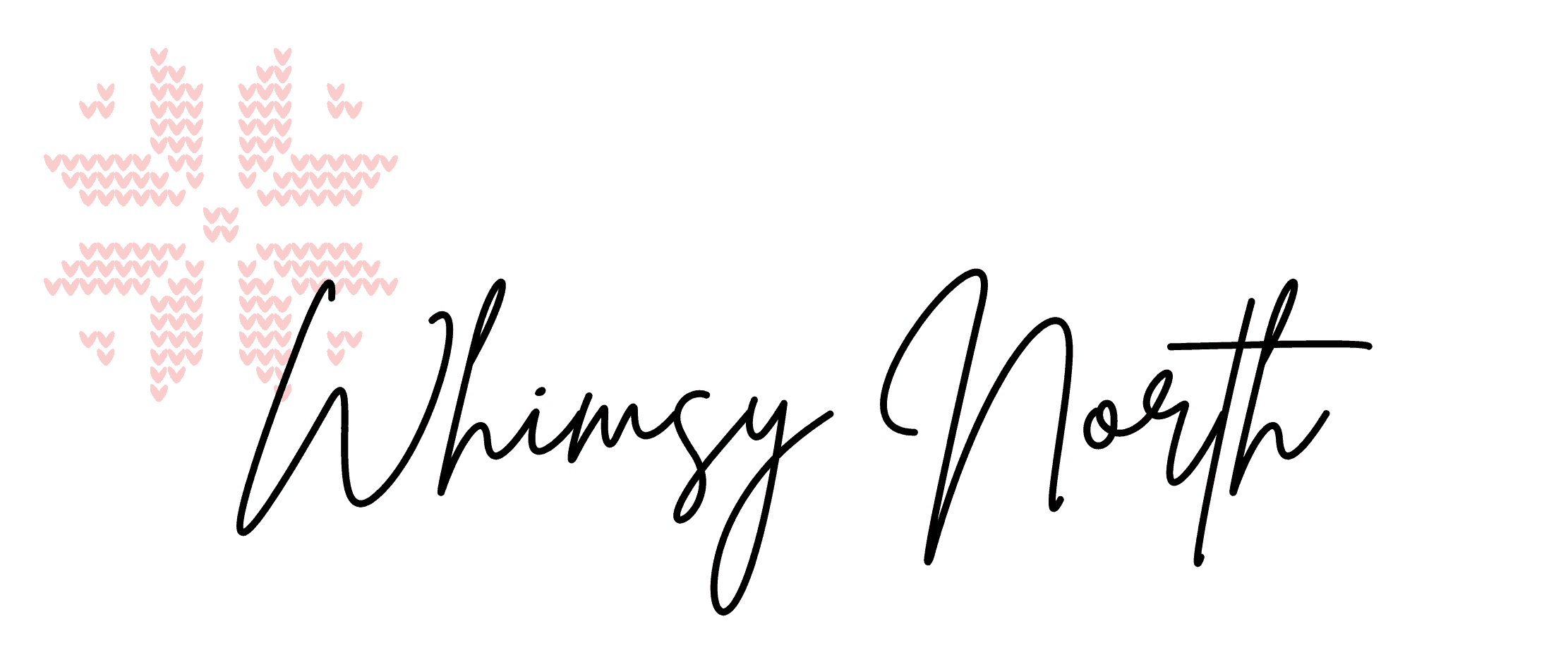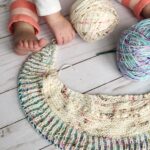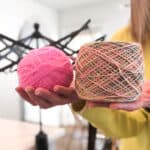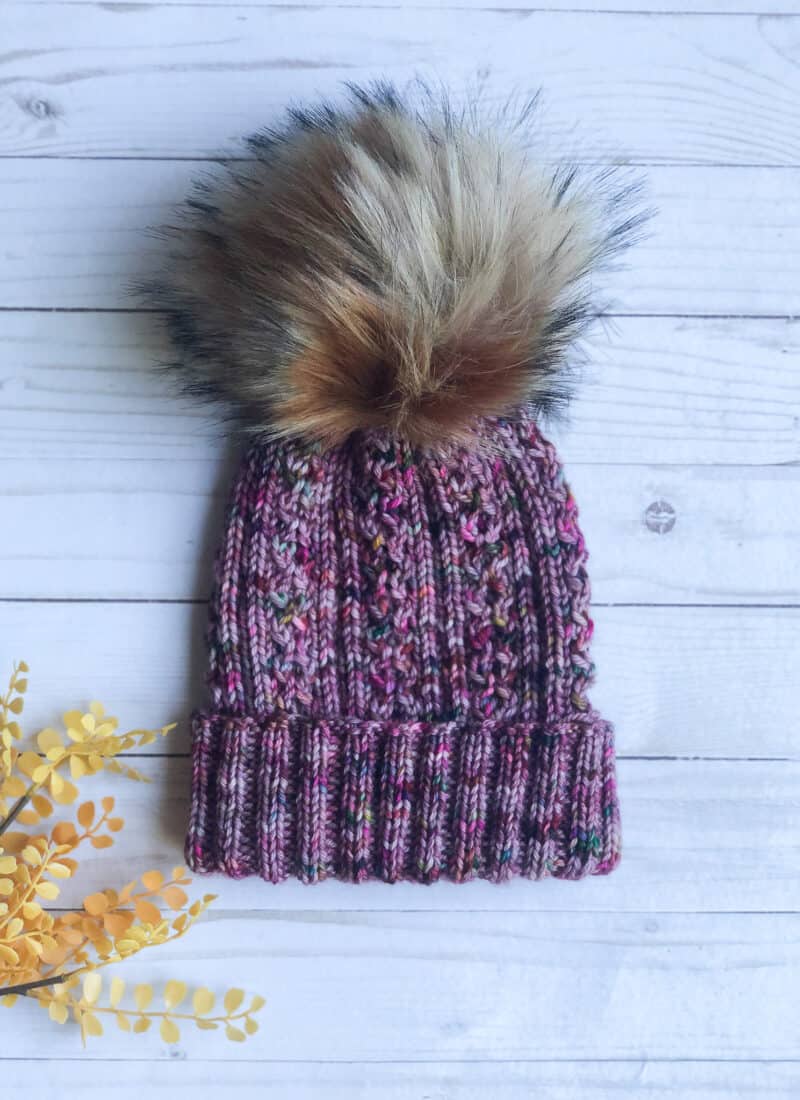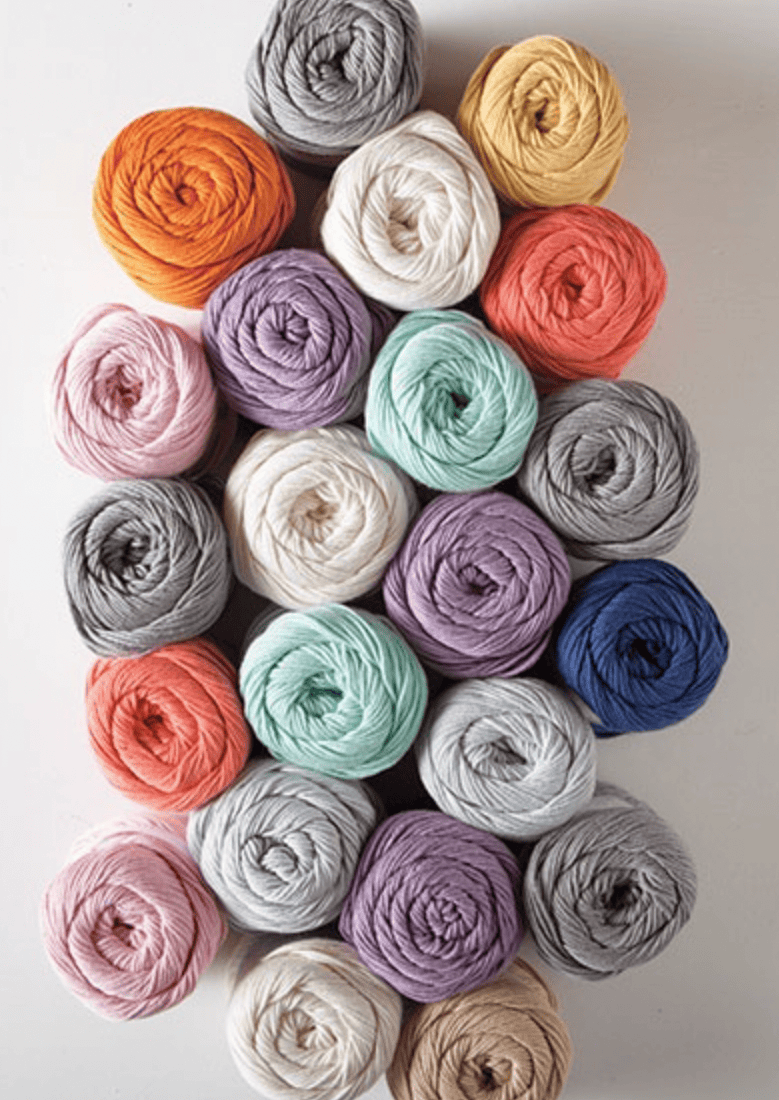Do you love the look of fair isle knitting but feel intimidated by the thought of holding multiple strands of yarn at once? What about catching floats and reading charts? I’m going to let you in on one of my favorite beginner colorwork secrets and it’s Mosaic Knitting.
If you can’t already tell from browsing around my blog or following me on Instagram, I love color! When I first started Whimsy North I tried embracing what I like to call “Instagram Neutral.” You know, where your entire feed is white, bright, and full of calm neutral colors? It makes for great cohesion on Instagram but slowly the color lover in me started to feel uninspired and that’s when I decided it was time to embrace my love of color.
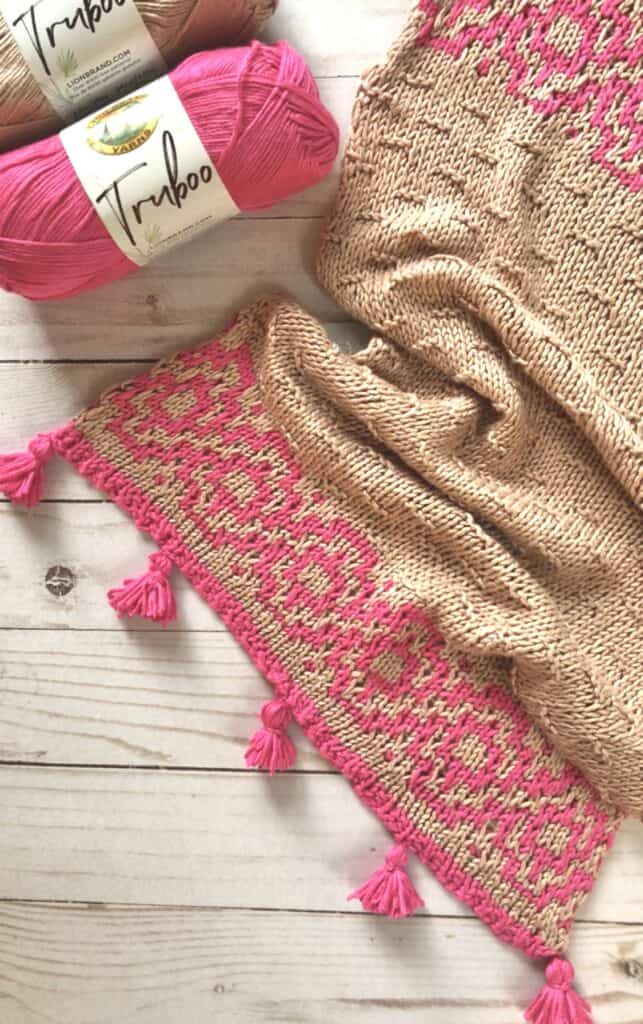
Adding Color
There are many ways you can “knit in color” and one of them is to add colorwork designs to your project. While I love a solid knit piece I’m typically drawn to things that feature multiple colors in them. Like my Glimmer Crop Sweater or Basalt Stone Cowl.
My Glimmer Crop is knit using a fair isle stranded colorwork technique and therefore requires you to hold multiple strands of yarn at one time and make sure you are “cathing your floats” in the back of your work. While my Basalt Stone Cowl is actually knit using mosaic knitting and is very beginner-friendly and a relaxing knit. So what’s the difference between the two?
PIN IT!
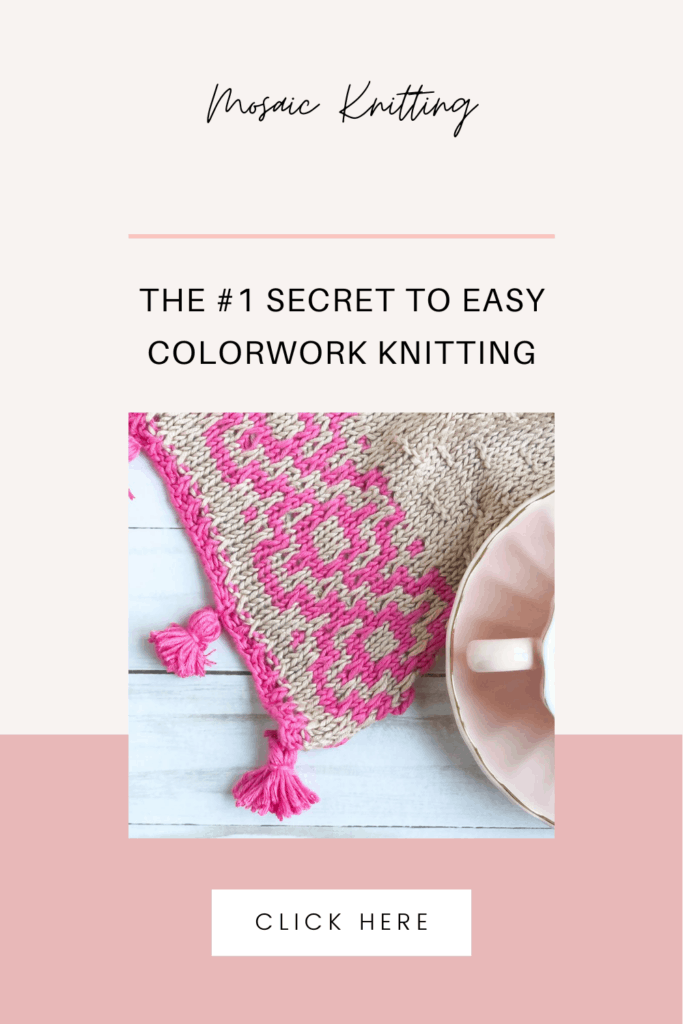
Pros of Mosaic Knitting vs. Fair Isle
Only one strand at a time:
- You only have to handle one strand of yarn at a time. Each row of mosaic knitting requires you to knit, purl, or slip stitches while working with only one strand of yarn at a time. Whereas fair isle may have you working 2 sometimes three different strands of yarn within the same row/round. This makes mosaic knitting a faster and easier option for colorwork.
Tension:
- Mosaic knitting has fewer tension problems. When you work with multiple strands in one row the distance between each stitch can cause puckering, lumpy or uneven knitting if you aren’t very careful about how tight you are knitting the next stitch. With mosaic knitting, you have to worry about that less making the finished project look and fit better.
Knitting in the round versus back and forth:
- Fair isle knitting is easiest done in the round and with only knit stitches. This is due because of the floats of yarn that need to be brought or carried behind the work. Sometimes you will find fair isle pieces that are knit flat but they are usually not a joy to knit. Mosaic knitting on the other hand lends itself well to flat back and forth knitting which gives you many more options for construction of your piece.
Fewer tangles:
- When knitting fair isle with multiple strands per row you may have to twist your yarns together in order to carry the non-working yarn along the back. This twisting can cause your yarns to tangle and make for a big mess. With mosaic knitting, you use the same color for two rows at a time and then switch to the next for two rows. There is no twisting required and therefore it’s easy for you to keep your two yarns separate.
No chart needed:
- If knitting charts intimidate you then mosaic knitting again is a great option. Since only one color is used for each row you don’t have to write out each color change simply when you knit a stitch or when you slip a stitch which lends itself better to written instructions. If you like to knit from charts keep reading to the section below on mosaic charts.
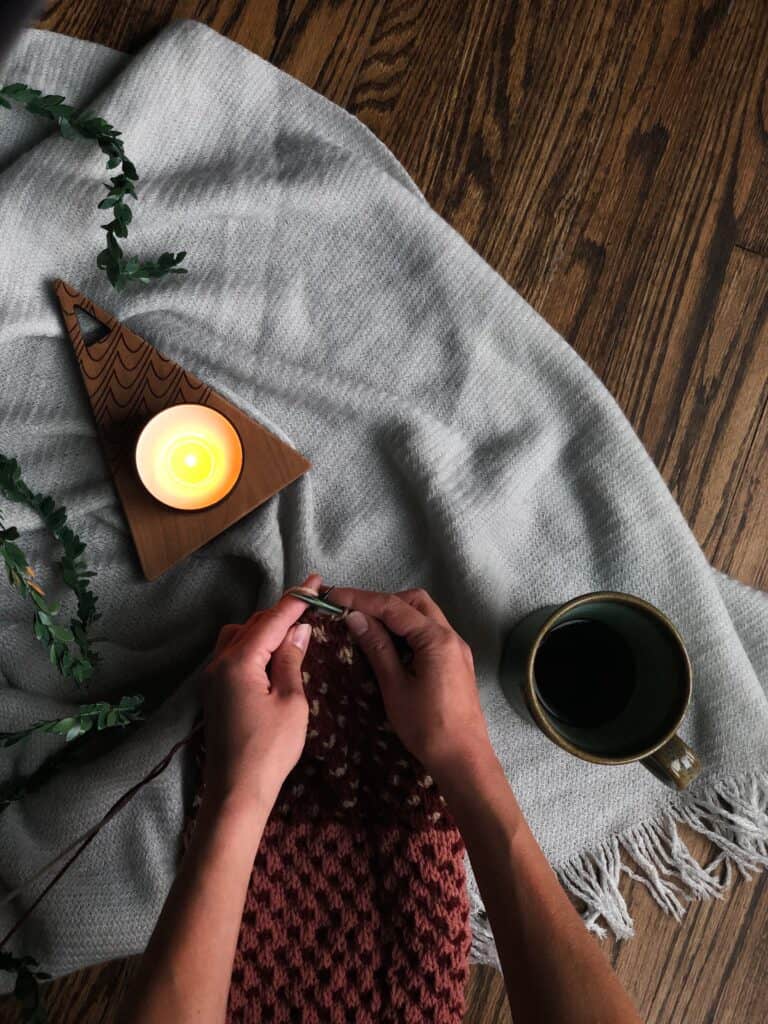
Limits of Mosaic Knitting
Like many things, mosaic knitting does have some limitations that stranded colorwork does not. Here are a few things to keep in mind when incorporating mosaic knitting into a design.
Boxy Designs:
- Due to the nature of the slip stitch mosaic patterns, they end up being very geometric and boxy. You will not be able to produce more fluid flowing designs like you can with fair isle/stranded colorwork.
Only two colors per motif:
- With the slipped stitches creating the design pattern you only have the ability to use two colors in your mosaic knitting. You can add multiple motifs and switch colors at that time but for a single motif, you only have the ability to knit with two different colors.
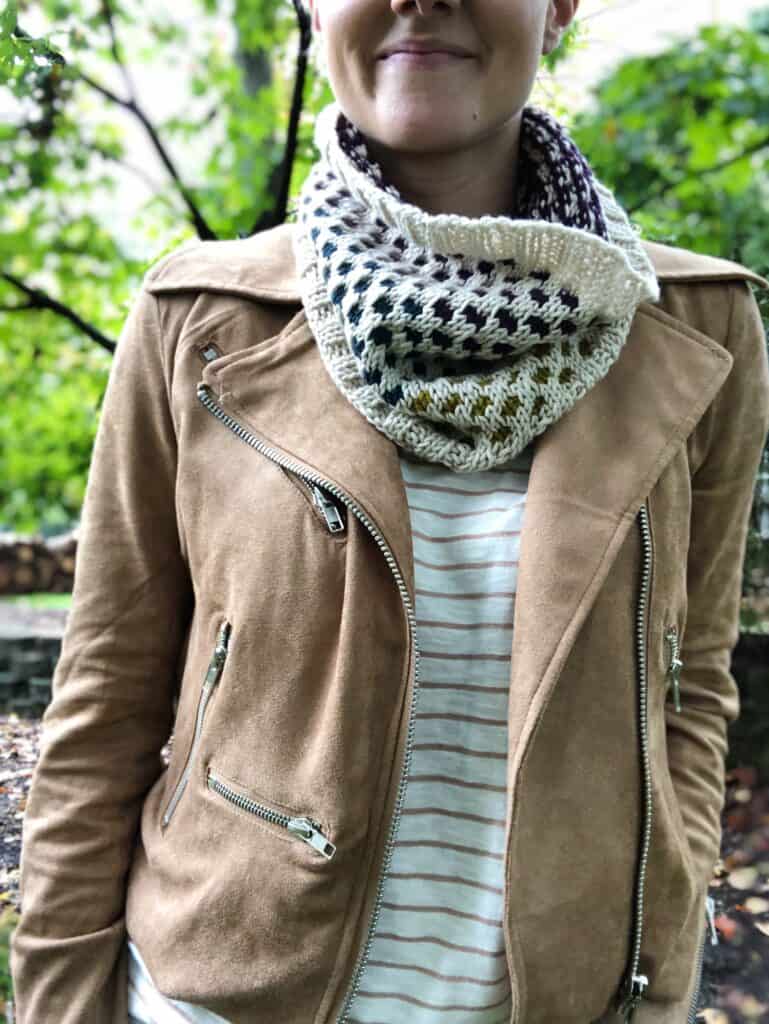
Techniques you need to know in order to start mosaic knitting.
Can you do a knit stitch, slip stitch, and purl stitch? Then you have the ability to start mosaic knitting. It’s really as easy as that. When you slip the stitch you do it purl-wise and if you are on the right side of the fabric hold the yarn in back and if you are on the wrong side of the fabric with the yarn in front.
If you are doing a stockinette stitch design this is really easy as your yarn is already in the correct position from either knitting or purling. If you are doing a garter stitch design then you will need to bring your yarn forward when knitting the wrong side row so that you keep your working yarn in front when slipping.
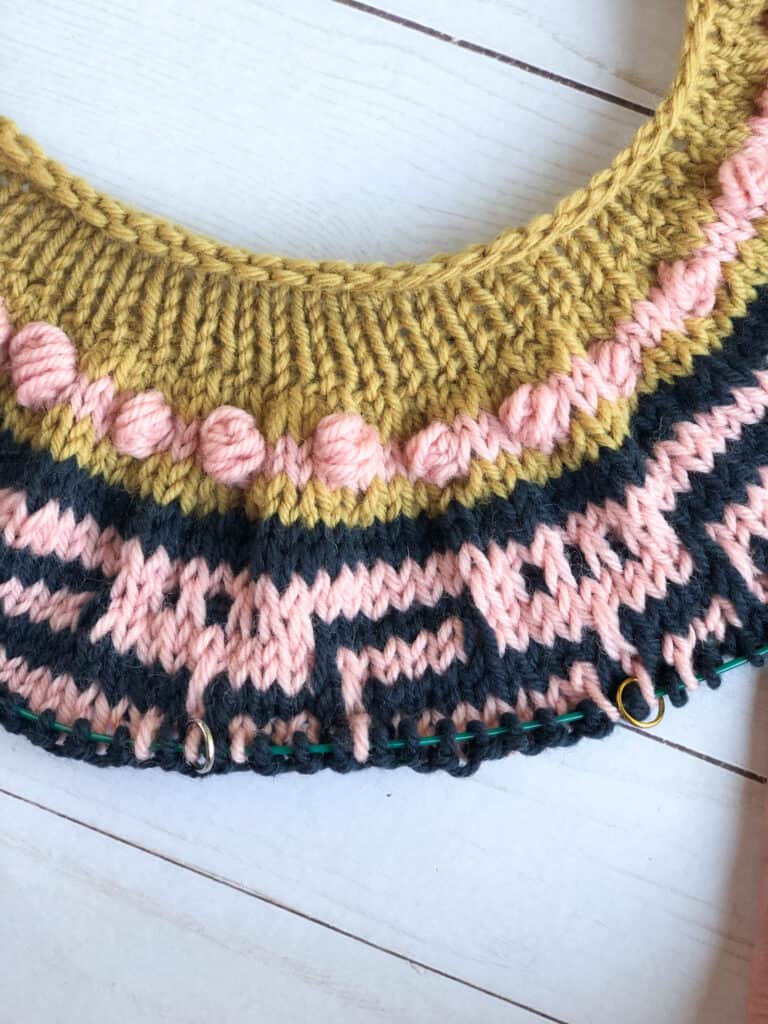
Reading mosaic knitting charts.
- Each horizontal row of squares represents two rows of knitting. The right side and the wrong side. Both of these rows are knit using the same color either back and forth or in the round.
- The right side rows begin at the right side of the chart and are worked right to left. The wrong side rows start on the left-hand side of that same row and are working left to right. One trick to keep in mind is on the wrong side row you simply knit the stitches that are the same color you are currently working with and slip the stitches of the other color. This makes it so that you don’t even need to look at the chart when doing the wrong side row you can just watch your knitting.
- Charts are worked from the bottom up and repeats are marked by vertical lines. If a chart includes stitches outside of the repeat lines you knit those stitches first, complete the number of repeats, and then knit any stitches at the end outside of the repeats last. As you can see from my chart below on line one, using color A you would knit the first stitch then start the repeats where you would repeat as many times as the pattern calls for between the two lines then once you get to the last 2 stitches you knit 2.
- The first stitch of every right-side row notes which color you will be knitting with. On those rows, you knit the stitches in that color and slip the stitches of the other color.
Example Chart
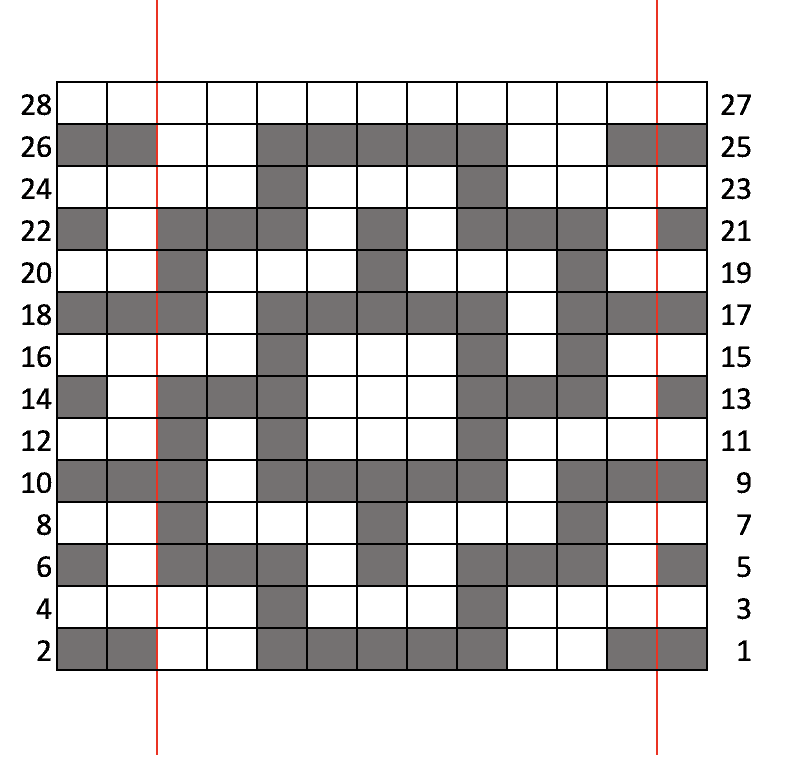
Mosaic Knitting Patterns
Are you ready to try your hand at some mosaic knitting? Then check out my patterns below that feature this fun and easy technique!
